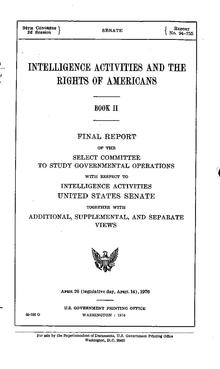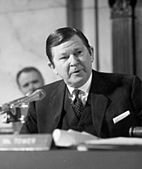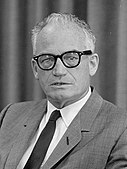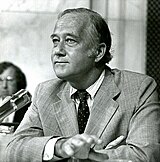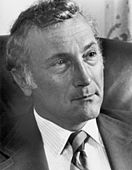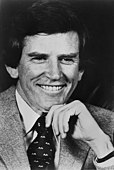Plausible deniability is the ability of people, typically senior officials in a formal or informal chain of command, to deny knowledge of or responsibility for actions committed by or on behalf of members of their organizational hierarchy. They may do so because of a lack or absence of evidence that can confirm their participation, even if they were personally involved in or at least willfully ignorant of the actions. If illegal or otherwise disreputable and unpopular activities become public, high-ranking officials may deny any awareness of such acts to insulate themselves and shift the blame onto the agents who carried out the acts, as they are confident that their doubters will be unable to prove otherwise. The lack of evidence to the contrary ostensibly makes the denial plausible (credible), but sometimes, it makes any accusations only unactionable.

The director of central intelligence (DCI) was the head of the American Central Intelligence Agency from 1946 to 2004, acting as the principal intelligence advisor to the president of the United States and the United States National Security Council, as well as the coordinator of intelligence activities among and between the various US intelligence agencies.

The United States Senate Select Committee on Intelligence is dedicated to overseeing the United States Intelligence Community—the agencies and bureaus of the federal government of the United States that provide information and analysis for leaders of the executive and legislative branches. The Committee was established in 1976 by the 94th Congress.

The United States President's Commission on CIA Activities within the United States was ordained by President Gerald Ford in 1975 to investigate the activities of the Central Intelligence Agency and other intelligence agencies within the United States. The Presidential Commission was led by Vice President Nelson Rockefeller, from whom it gained the nickname the Rockefeller Commission.
The Huston Plan was a 43-page report and outline of proposed security operations put together by White House aide Tom Charles Huston in 1970. It came to light during the 1973 Watergate hearings headed by Senator Sam Ervin. According to U.S. Senator Charles Mathias, U.S. President Richard Nixon rescinded the plan on July 28, 1970, after approving it on July 23. Mathias commented that "Many constitutional lawyers believe that for five days in 1970 the fundamental guarantees of the Bill of Rights were suspended by the mandate given the secret 'Huston plan'," and that during the five days the plan was approved, "authoritarian rule had superseded the constitution." Specifically, the authorization was to suspend the protections from the Fourth Amendment to the U.S. Constitution against unreasonable searches and seizures.
The Hughes–Ryan Amendment was an amendment to the Foreign Assistance Act of 1961, passed as section 32 of the Foreign Assistance Act of 1974. The amendment was named for its co-authors, Senator Harold E. Hughes (D–IA) and Representative Leo Ryan (D–CA). The amendment required the President of the United States to report all covert actions of the Central Intelligence Agency to one or more Congressional committees.

The Directorate of Operations (DO), less formally called the Clandestine Service, is a component of the US Central Intelligence Agency. It was known as the Directorate of Plans from 1951 to 1973; as the Directorate of Operations from 1973 to 2005; and as the National Clandestine Service (NCS) from 2005 to 2015.
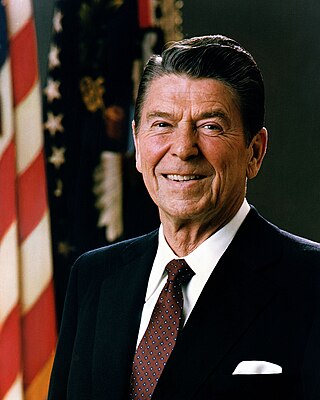
Executive Order 12333, signed on December 4, 1981 by U.S. President Ronald Reagan, was an executive order intended to extend powers and responsibilities of U.S. intelligence agencies and direct the leaders of U.S. federal agencies to co-operate fully with CIA requests for information. This executive order was titled United States Intelligence Activities.

Project MINARET was a domestic espionage project operated by the National Security Agency (NSA), which, after intercepting electronic communications that contained the names of predesignated US citizens, passed them to other government law enforcement and intelligence organizations. Intercepted messages were disseminated to the FBI, CIA, Secret Service, Bureau of Narcotics and Dangerous Drugs (BNDD), and the Department of Defense. The project was a sister project to Project SHAMROCK.
Project SHAMROCK was the sister project to Project MINARET, an espionage exercise started in August 1945. Project MINARET involved the accumulation of all telegraphic data that entered or exited the United States. The Armed Forces Security Agency (AFSA) and its successor, the National Security Agency (NSA), were given direct access to daily microfilm copies of all incoming, outgoing, and transiting telegrams via the Western Union and its associates RCA and ITT. NSA did the operational interception, and, if there was information that would be of interest to other intelligence agencies, the material was passed to them. Intercepted messages were disseminated to the FBI, CIA, Secret Service, Bureau of Narcotics and Dangerous Drugs (BNDD), and the Department of Defense. No court authorized the operation and there were no warrants.
Operation CHAOS or Operation MHCHAOS was a Central Intelligence Agency (CIA) domestic espionage project targeting American citizens operating from 1967 to 1974, established by President Lyndon B. Johnson and expanded under President Richard Nixon, whose mission was to uncover possible foreign influence on domestic race, anti-war, and other protest movements. The operation was launched under Director of Central Intelligence (DCI) Richard Helms by chief of counter-intelligence James Jesus Angleton, and headed by Richard Ober. The "MH" designation is to signify the program had a global area of operations.
The Pike Committee is the common name for the United States House Permanent Select Committee on Intelligence during the period when it was chaired by Democratic Representative Otis G. Pike of New York. Under Pike's chairmanship, the committee investigated illegal activities by the U.S. Central Intelligence Agency (CIA), the Federal Bureau of Investigation (FBI), and the National Security Agency (NSA). The Committee conducted much of its investigation, while the U.S. Senate Select Committee to Study Governmental Operations with Respect to Intelligence Activities, chaired by Senator Frank Church and informally known as the "Church Committee," conducted its own investigation. Unlike the report of the investigation of the Church Committee, which was eventually released to the public in the face of Executive Branch opposition to its release, the report of the investigation by the Pike Committee was suppressed from release to the American public, although portions of it were leaked and it was eventually published abroad.
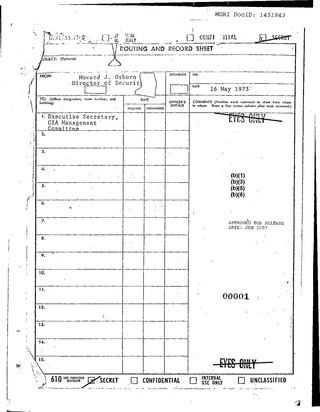
The "Family Jewels" is the name of a set of reports detailing illegal, inappropriate and otherwise sensitive activities conducted by the Central Intelligence Agency from 1959 to 1973. William Colby, the CIA director who received the reports, dubbed them the "skeletons in the CIA's closet". Most of the documents were released on June 25, 2007, after more than three decades of secrecy. The non-governmental National Security Archive filed a request for the documents under the Freedom of Information Act fifteen years before their release.
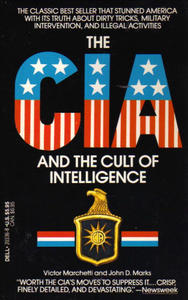
The CIA and the Cult of Intelligence is a 1974 controversial non-fiction political book written by Victor Marchetti, a former special assistant to the Deputy Director of the Central Intelligence Agency, and John D. Marks, a former officer of the United States Department of State.

The Central Intelligence Agency (CIA) is a civilian foreign intelligence service of the United States federal government, tasked with gathering, processing, and analyzing national security information from around the world.
At various times since the creation of the Central Intelligence Agency, the Federal government of the United States has produced comprehensive reports on CIA actions that marked historical watersheds in how CIA went about trying to fulfill its vague charter purposes from 1947. These reports were the result of internal or presidential studies, external investigations by congressional committees or other arms of the Federal government of the United States, or even the simple releases and declassification of large quantities of documents by the CIA.

Executive Order 11905 is a United States Presidential Executive Order signed on February 18, 1976, by President Gerald R. Ford in an effort to reform the United States Intelligence Community, improve oversight on foreign intelligence activities, and ban political assassination. Much of this EO would be changed or strengthened by Jimmy Carter's Executive Order 12036 in 1978.

Executive Order 12036 is a United States Presidential Executive Order signed on January 24, 1978, by President Jimmy Carter that imposed restrictions on and reformed the U.S. Intelligence Community along with further banning indirect U.S. involvement in assassinations. The EO was designed to strengthen and expand Executive Order 11905, which was originally signed by Gerald R. Ford in 1976.
The Boren-McCurdy intelligence reform proposals were two legislative proposals from Senator David Boren and Representative Dave McCurdy in 1992. Both pieces of legislation proposed the creation of a National Intelligence Director. Neither bill passed into law.

The United States' Central Intelligence Agency (CIA) made numerous unsuccessful attempts to assassinate Cuban leader Fidel Castro. There were also attempts by Cuban exiles, sometimes in cooperation with the CIA. The 1975 Church Committee claimed eight proven CIA assassination attempts between 1960 and 1965. In 1976, President Gerald Ford issued an Executive Order banning political assassinations. In 2006, Fabián Escalante, former chief of Cuba's counterintelligence, stated that there had been 634 assassination schemes or attempts. The last known plot to assassinate Castro was by Cuban exiles in 2000.

